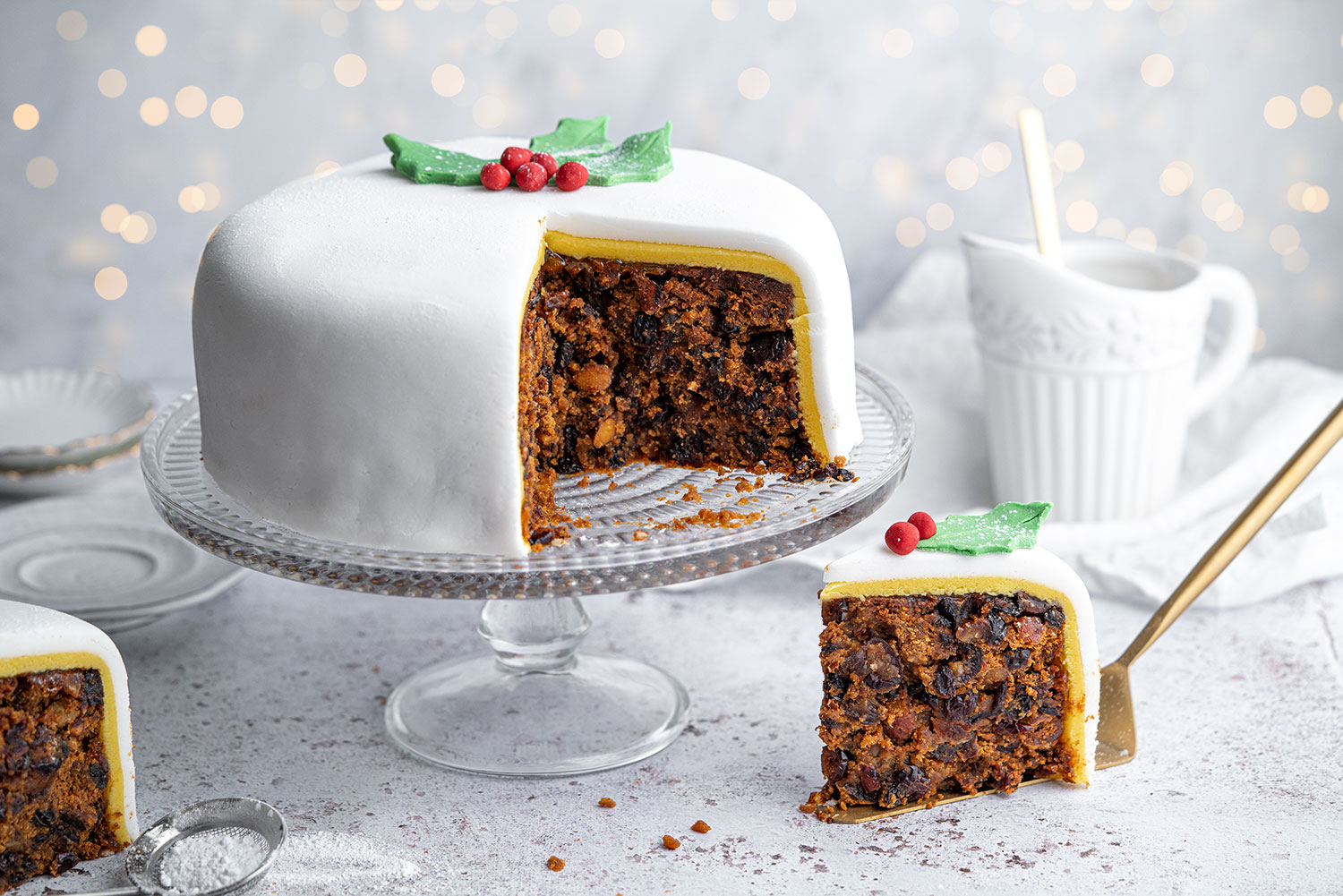The Christmas season is a time for joy, family, and of course, delicious treats. Among the many festive delights, the Christmas cake reigns supreme, a rich and decadent masterpiece that has been gracing holiday tables for centuries. This article delves into the fascinating world of Christmas cakes, exploring their history, variations, and the art of making them.
A Rich History
The origins of Christmas cake can be traced back to ancient Rome, where Saturnalia, a festival honoring the god Saturn, was celebrated with lavish feasts. These feasts often included spiced cakes and pastries. In medieval Europe, fruitcakes, often infused with spices and dried fruits, became popular during the Christmas season. These early versions of Christmas cake were often heavy and dense, designed to last for weeks, even months.
The modern Christmas cake, as we know it today, began to emerge in Victorian England. With the rise of sugar production and improved baking techniques, cakes became lighter and more refined. Rich fruits like dried figs, raisins, and currants were soaked in brandy or other spirits for weeks, adding a deep, boozy flavor. These fruits were then incorporated into a dense cake batter, often flavored with spices like cinnamon, nutmeg, and cloves.
A Global Affair
While the classic British Christmas cake holds a special place in many hearts, the concept of a festive cake has spread across the globe, with each region adding its unique twist.

Germany: Stollen, a dense fruitcake traditionally shaped like a baby Jesus, is a beloved Christmas treat.
The Art of Making a Christmas Cake
Making a traditional Christmas cake is a labor of love. It requires careful planning and meticulous attention to detail.
Fruit Preparation: The process begins weeks, even months, in advance with the soaking of the dried fruits in alcohol. This allows the flavors to meld and create a deeply infused essence.
Modern Twists on a Classic
While the traditional Christmas cake remains a cherished tradition, many modern bakers are putting their own unique spin on this festive classic.
Flavor Innovations: From chocolate and orange to ginger and spice, bakers are experimenting with new and exciting flavor combinations.
Tips for Baking a Perfect Christmas Cake
Use high-quality ingredients: The quality of your ingredients will directly impact the flavor of your cake.
Enjoying Your Christmas Cake
Whether you choose to bake your own or purchase one from a local bakery, the Christmas cake is a centerpiece of the holiday season.
Serving Suggestions: Serve slices of Christmas cake alongside a dollop of cream, a scoop of ice cream, or a drizzle of brandy butter.
Conclusion
The Christmas cake, with its rich history and enduring appeal, remains a beloved symbol of the holiday season. From its humble beginnings to the modern-day masterpieces created by bakers around the world, the Christmas cake continues to evolve while maintaining its timeless charm. Whether you’re a seasoned baker or a novice in the kitchen, the art of making a Christmas cake offers a rewarding and joyful experience. So, this holiday season, embrace the tradition, indulge in a slice of Christmas cheer, and savor the magic of this festive treat.